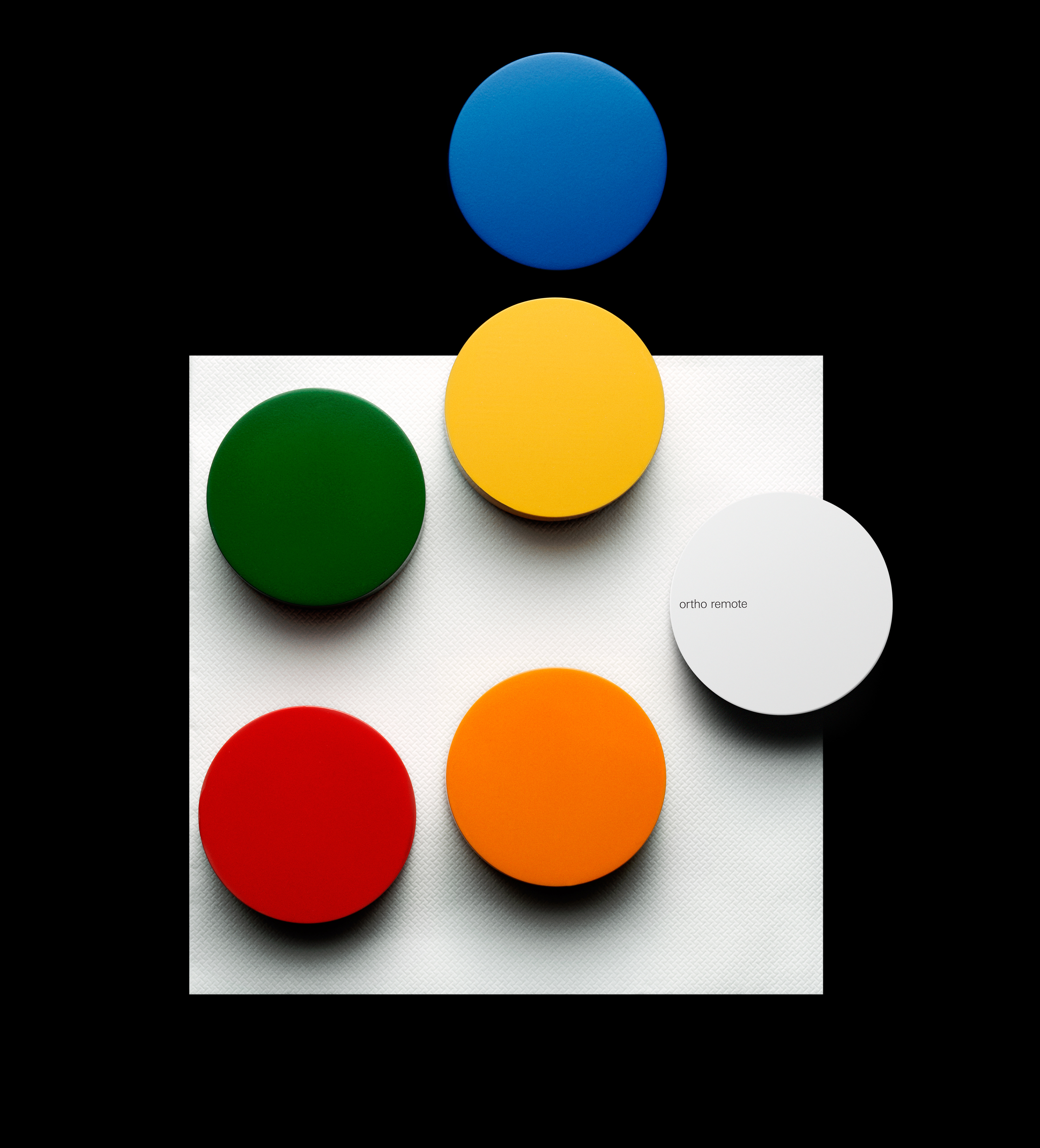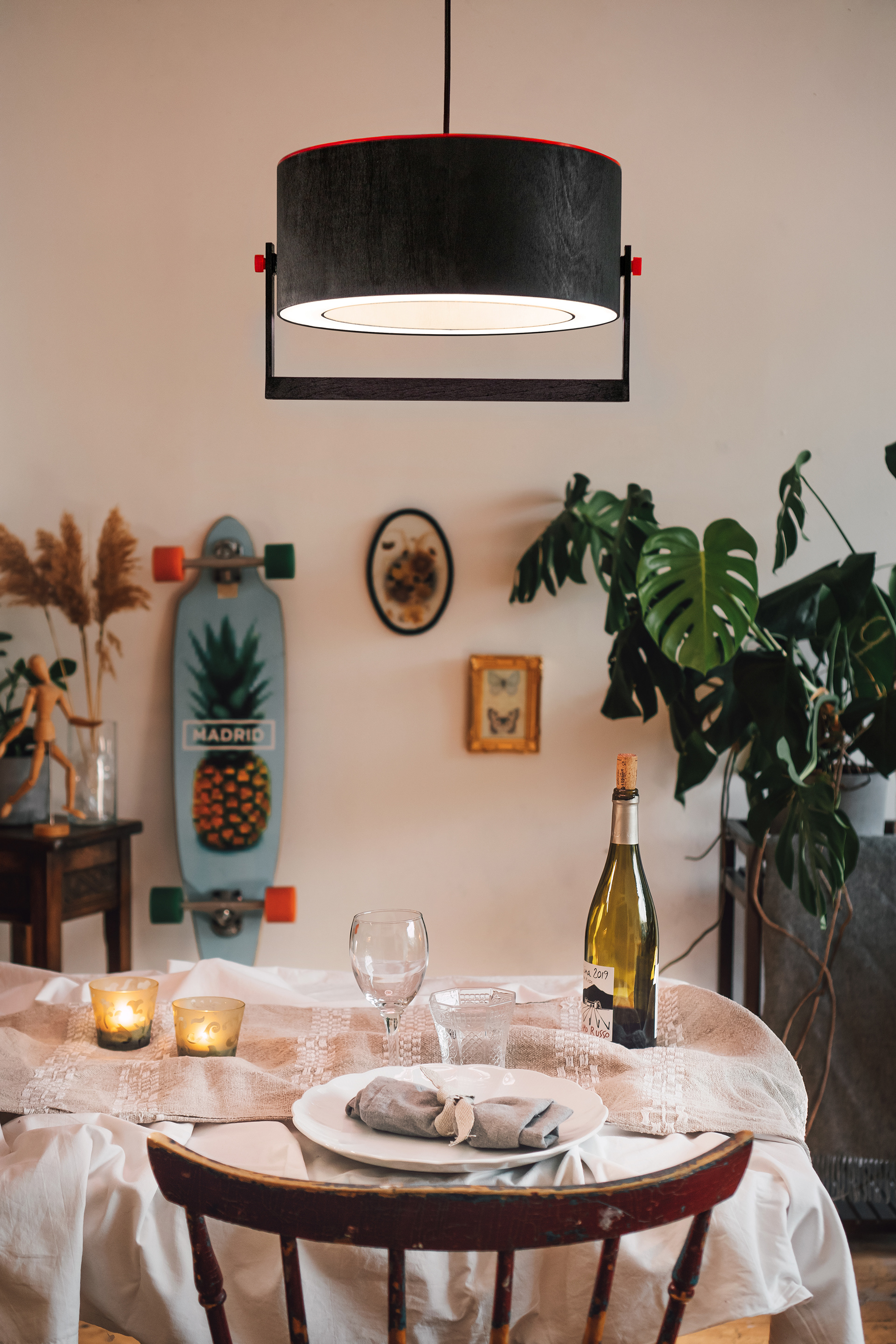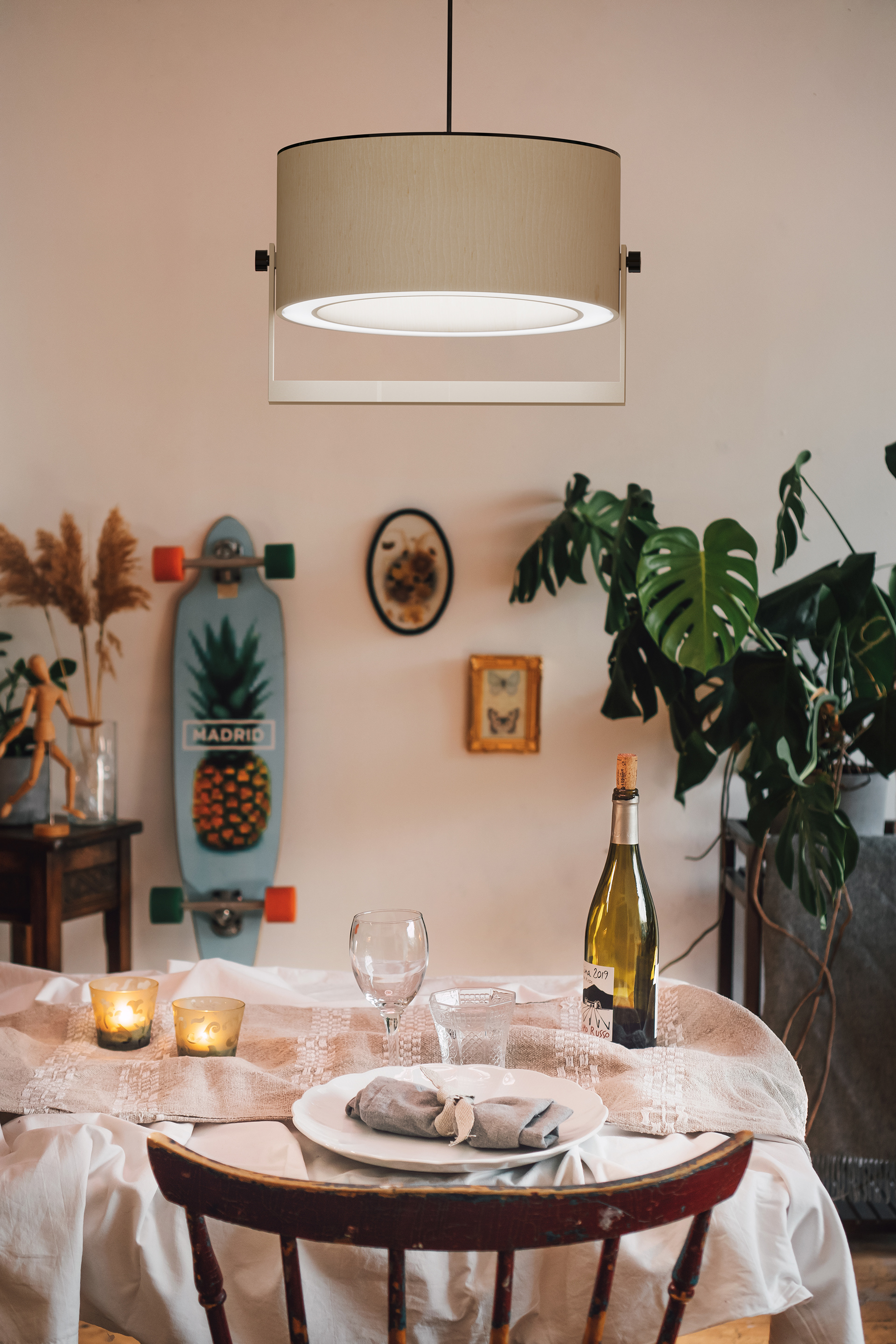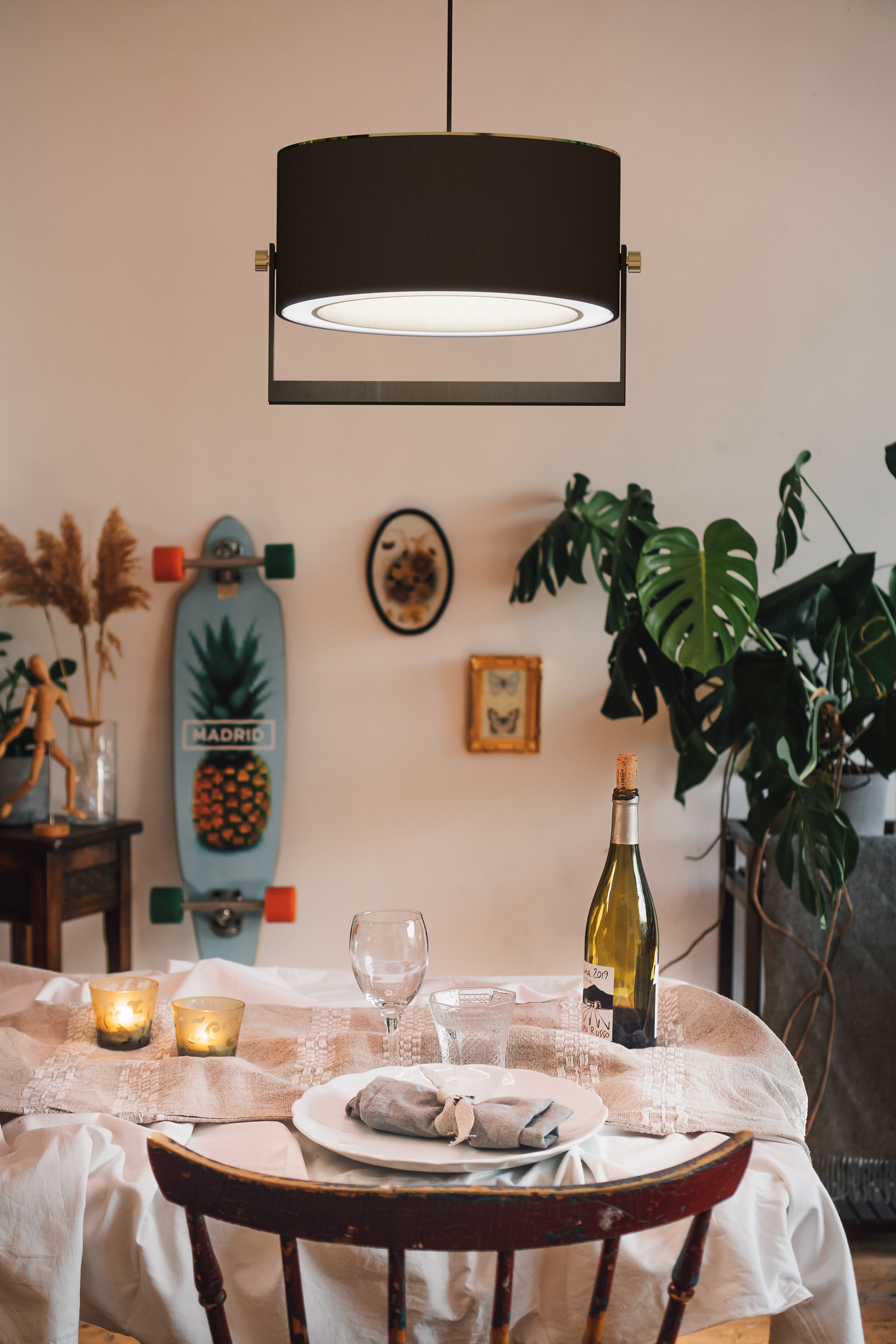The brief of a student project asked for a lamp in natural materials that ought to fit within the brand of an existing company. Early on, my main goal was to produce a lamp with local parts and materials which is why it made sense to choose the Swedish company Teenage Engineering as the brand to design for. The award-winning company has a minimalistic approach to create fun and aesthetically interesting audio products. To be able to create a product concept that would fit with their design, a Design Format Analysis (as created by Anders Warell) was used. In my analysis I found that the main elements of their design is vivid colors, sharp and round geometries. Read more about the Design Format Analysis here that incorporates three of my own designs that are meant to fit the Teenage Engineering brand.



Inspiration for the lamp concept taken from various Teenage Engineering products like the OB-4, Frekvens and Ortho Remote.
Before sketching I explored common light parameters and evaluated lighting conditions with concern for usability and sustainability. The goal of this project was to design an ergonomic workspace LED lamp that could be used for other situations as well thanks to the implemented dimmer and ability to set the color tone as preferred. The results of the pre-study can be seen below and the whole, quite nerdy report can be read here.


Image of my Design Format Analysis of the Teenage Engineering brand with my three products in the bottom (left) and the found requirements (right).
Being inspired by the OB-4 speaker from Teenage Engineering and other wood lamps, various sketches were made to explore how square or round geometries could be used as a luminaire. The use of an adjustable handle mounted on the sides hints to beautiful vintage movie lights. A cylindrical design was chosen partly to make the experience more dynamic as bent wood is more interesting than straight wood in my opinion but also because a halo like light source is common for reducing shadows, for example in ring lights for cameras. By using two rings of LEDs as shown below, a high brightness can be achieved that also provides an interesting aesthetic with the internally lit natural wood and the diffused acrylic visible on the bottom.
When using locally sourced wood, a Scandinavian design felt fitting as it often uses natural materials and showcase interesting combinations of different materials produced with a high level of craftsmanship. Such products often play with contrast between dark and bright which was incorporated by using an untreated veneer lit on the inside, with a stained veneer on the outside of the lamp. To achieve a gestalt that resembles a Teenage Engineering product, the use of dark monochrome tones in the outer wood and plastic handle is meant to contrast the glossy red plastic knobs and top cover. These contrasting materials and colors feel dynamic and alive at various dimmer levels and light colors. Furthermore, the use of LEDs and ceiling mounting makes the product safe for use and will not take up any precious working space.



Images of the handcrafted lamp. A dinner setting (left), a close-up of the internal and handle (middle), the knob and contrast between materials (right).
Image below shows many of the features incorporated into the wood lamp concept.
Some of the main features of the wood lamp
Going beyond the scope of the course, I decided to build a fully functional one-off product of my concept. To achieve this I chose to use standard birch plywoods that was laser-cut so that assembly would be precise and repeatable. The birch is the main material and is used in the outer and inner shell as well as the handle and internal structures. Before assembly of all parts, the wood was steam bent and glued together to achieve the cylindrical outer and inner birch faces.
When looking for suitable electronics to realise my vision I was lucky to get in contact with Nellca that agreed to give me those products free of charge for this school project. (LED strips, LED driver, cables and more). As wanted, the LED strips could change color and be dimmed which made the final product much more dynamic as the user can control this either through the red knobs on the side or through an app. The only parts that are not wood are the electronics, knobs, led diffuser and top cover.
When looking for suitable electronics to realise my vision I was lucky to get in contact with Nellca that agreed to give me those products free of charge for this school project. (LED strips, LED driver, cables and more). As wanted, the LED strips could change color and be dimmed which made the final product much more dynamic as the user can control this either through the red knobs on the side or through an app. The only parts that are not wood are the electronics, knobs, led diffuser and top cover.
One of the biggest struggles of this design was to find a way to fit the LED driver that is needed to drive the LED strips. Luckily I found a way to hide this long and thin driver inside of a birch box hidden in the center of the lamp.




Images showcasing some steps of the crafting of the wood lamp.
Although the design might look quite simple when finished, a lot of effort and consideration went into making sure all parts fit well to give the finished product a feeling of high quality and craftsmanship. As with any product the only way to experience it fully is to see it in reality and this is especially true with lighting products. For now it can be experienced in my office in Gothenburg, Sweden.
Having learnt a lot when building this lamp, my first ever lighting product, I am eager to explore new ways of working with light as it is a really intriguing parameter that can alter the look and feel of a room, interface or product drastically. Given the thorough development process with laser-cutting as the main manufacturing method, it is possible to manufacture the product at scale with various dimensions and materials. Below are some renders with various wood materials and plastic colors.







Renders of various material and color options. The lamp could also be produced in larger or smaller sizes depending on the needs.

